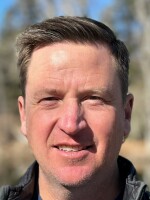LEILA FADEL, HOST:
In California, it's been another week of rolling blackouts and wildfires, about a dozen or so throughout the state. And despite the historically fierce winds, damage to homes and infrastructure has been pretty light compared to recent years. So just how bad are things? Here to help us better understand what's going on is NPR's Kirk Siegler, who's been covering the fires. So, Kirk, start by putting this into context for us.
KIRK SIEGLER, BYLINE: Right. So let's take a look at the largest wildfire in the state right now - and it's big - the Kincade Fire in Northern California. Firefighters are making progress now toward containing and controlling it. Now, I don't want to discount the horrible hardships some people are facing. But it's remarkable that a fire this big in these conditions on this day right now, when you factor in the changing climate, the overgrown, dry forests, that it's destroyed less than a hundred homes.
That's no small thing. And closer to where I am here in Los Angeles, in West LA, a wildfire earlier this week ignited near the Getty Museum. Thousands of people evacuated. About a dozen houses burned. But you've got to say, tens of thousands of houses did not burn.
FADEL: You know, around this time last year, you and I were in Northern California covering the Camp Fire - extreme devastation. How do these compare?
SIEGLER: Well, they just don't so far. You know, as you say, the Camp Fire - we're coming up on the one-year anniversary of that. Eighty five lives were lost. That fire destroyed almost 19,000 structures, leveling whole neighborhoods built out into extremely dry forests. And in the year prior to that, the wine country fires in and around Santa Rosa near where the Kincade fire is burning today - that destroyed close to 9,000 structures and killed 44 people.
FADEL: So what's different this year - at least so far?
SIEGLER: Right, at least so far - I think that's the key. But I'd say it's a combination of things. Preparedness is a big one. The mass evacuations that we've seen again - they've gone relatively smoothly. I think Paradise was a big wakeup call. I think some towns have worked pretty hard on their emergency planning and their evacuation routes and drills. And another thing, Leila, is that the science is improving when it comes to predicting extreme weather events. I talked to Daniel Swain about this. He's a climate scientist at UCLA.
DANIEL SWAIN: Meteorology has gotten really good at pinning these offshore wind events and these extreme fire risk events down in advance. These do not take anyone by surprise - at least, anybody who's in the fire community who's paying attention to the official weather forecasts.
SIEGLER: So what he's saying - there's a - like, when these dry desert winds blow in, almost to the T, fire managers - you know, they know about when they're going to arrive and when they're going to peak. So they move engines and cruise around at certain pressure points and neighborhoods where they think the fire may head and try to predict where the embers could even land. And also, you know, the forecasts are aiding power companies in knowing when to shut the power off now to prevent their lines from being blown over and igniting new fires.
FADEL: So they're getting better at predicting fire behavior. But what does that mean long-term for the state?
SIEGLER: I mean, like I said, we've got to qualify here that all of this progress I've been talking about this week fighting these fires, you know, could change like that. Climate change is the big thing here. Scientists know that the typical California winter rainy season that we should be heading into - well, that's shortening dramatically, and it's getting a lot more fickle. Temps have risen here by a couple degrees in the past few decades.
That doesn't sound like a lot, but that's huge. And that's leading to obviously warmer temperatures and hotter temperatures at this time of year but also just extraordinarily dry fuels. And if these winds continue, and the rains don't come, we could be right back where we were last year, I'm afraid.
FADEL: That's NPR's Kirk Siegler.
Thank you.
SIEGLER: You're welcome. Transcript provided by NPR, Copyright NPR.




